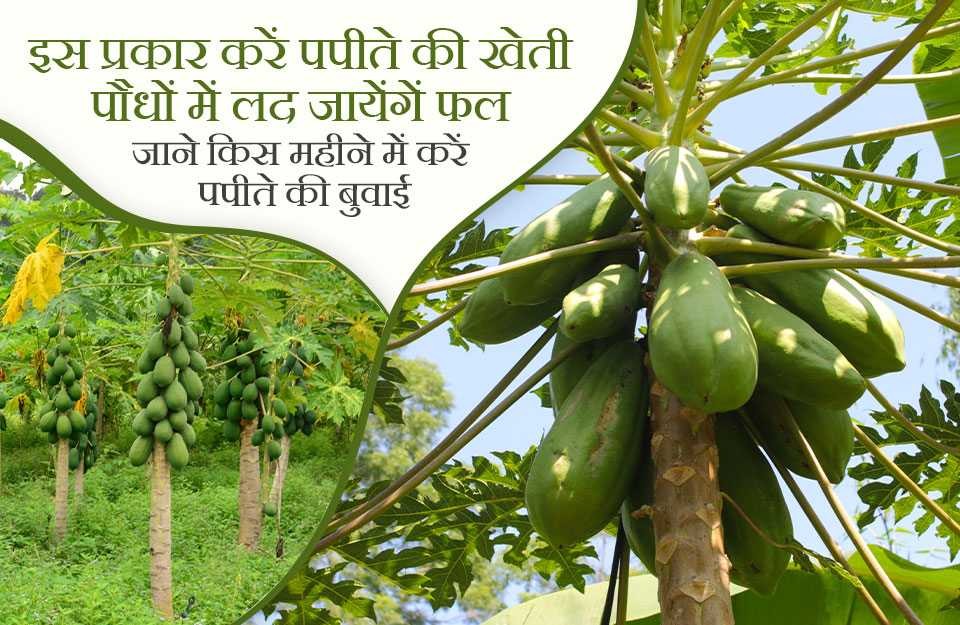
Papaya is a fruit brimming with nutrients and flavor, containing ample amounts of vitamins and proteins that boost the immune system. The presence of beta-carotene makes it beneficial for eye health. Papaya fruit is utilized in various forms such as preserves, jams, and shakes. Additionally, its fruit aids in wound healing.
Papaya is a sought-after fruit in tropical regions, thriving especially in cooler temperatures. In India, the primary papaya-producing states are Madhya Pradesh, Andhra Pradesh, Gujarat, Karnataka, Maharashtra, Odisha, West Bengal, Assam, Kerala, and the Southern and Western states. These states contribute three-quarters of the country's total production. Papaya holds significance both medicinally and commercially. The global annual production of papaya is estimated at 6 million tons, with India leading with an annual production of 3 million tons. Key papaya-producing countries include Brazil, Nigeria, Mexico, Indonesia, Peru, China, the Philippines, and Thailand.
Papaya plants should be spaced 8 feet apart or in a 7x7-foot pattern. 900 plants can be accommodated per acre, while 2500 plants are prepared per hectare. Holes for planting should measure 2 feet long, 2 feet wide, and 2 feet deep. Plants should be supported with stakes placed by a tractor at a distance of 7-8 feet and a height of 1 foot. During planting, a mixture of 8-10 kg of cow dung manure and 0.5 kg of neem cake fertilizer should be added to each pit. Before planting, the plants should be lightly moistened with water.
Papaya planting occurs year-round in major states, with heightened demand during the month of Ramadan. Cultivation is typically undertaken in the spring season, from February-March and July-September. Planting should coincide with periods of low aphid vector activity to minimize the risk of virus or disease transmission.
Soil and Climate: Papayas thrive in deep, well-drained sandy loam soil with effective water drainage. The soil pH should range between 6.5 to 7. In areas exposed to strong winds and storms, both fruits and plants are susceptible to damage. Hence, it is advisable to cultivate papayas in gardens and suitable locations.
Nutritional Requirements: Papaya plants require nutrient-rich soil for optimal growth. Enriching the soil with cow dung manure is essential. Based on soil analysis, chemical fertilizers should be applied to the plants. During fruit formation, potassium and calcium supplementation is recommended, especially when the fruits and leaves start showing signs of yellowing.
Water Management: Continuous water supply is essential for papaya plants throughout the year. Drip irrigation is recommended to ensure adequate water supply and maximize production. Providing 8-9 liters of water per hour with two drippers per plant is sufficient. Adjusting soil moisture levels and water supply according to weather conditions is crucial. During the rainy season, water requirements decrease, but proper drainage should be maintained.
Varieties of Papaya: Key papaya varieties include Dioecious Red Lady-786, CO-2,3,6, Surya, Pusa Delicious, Honeydew, Pusa Nanha, Arka Prabhat, Washington, Solo varieties, and ARTP-1.
Economic Importance and Utilization of Papaya: Papaya is rich in vitamins A and C, making it a highly nutritious fruit. Its versatility extends to tenderizing meat with papain, manufacturing chewing gum, skincare products, and treatments for silk and wool. Papaya aids in relieving constipation due to its fiber content and helps manage diabetes, cardiovascular issues, and cholesterol levels. Raw papayas are used as vegetables, and the juice from its leaves is beneficial in treating dengue fever.
Papaya Health Benefits:
Fruit Harvesting Process: After four months of planting papaya, when the fruits turn yellow, they should be harvested. Fruits continue ripening on the plants for up to four months post-harvesting initiation. After harvesting, store the fruits for only one week. Wrap the fruits in paper or place them in baskets before sending them to the market.
Disease and Management: